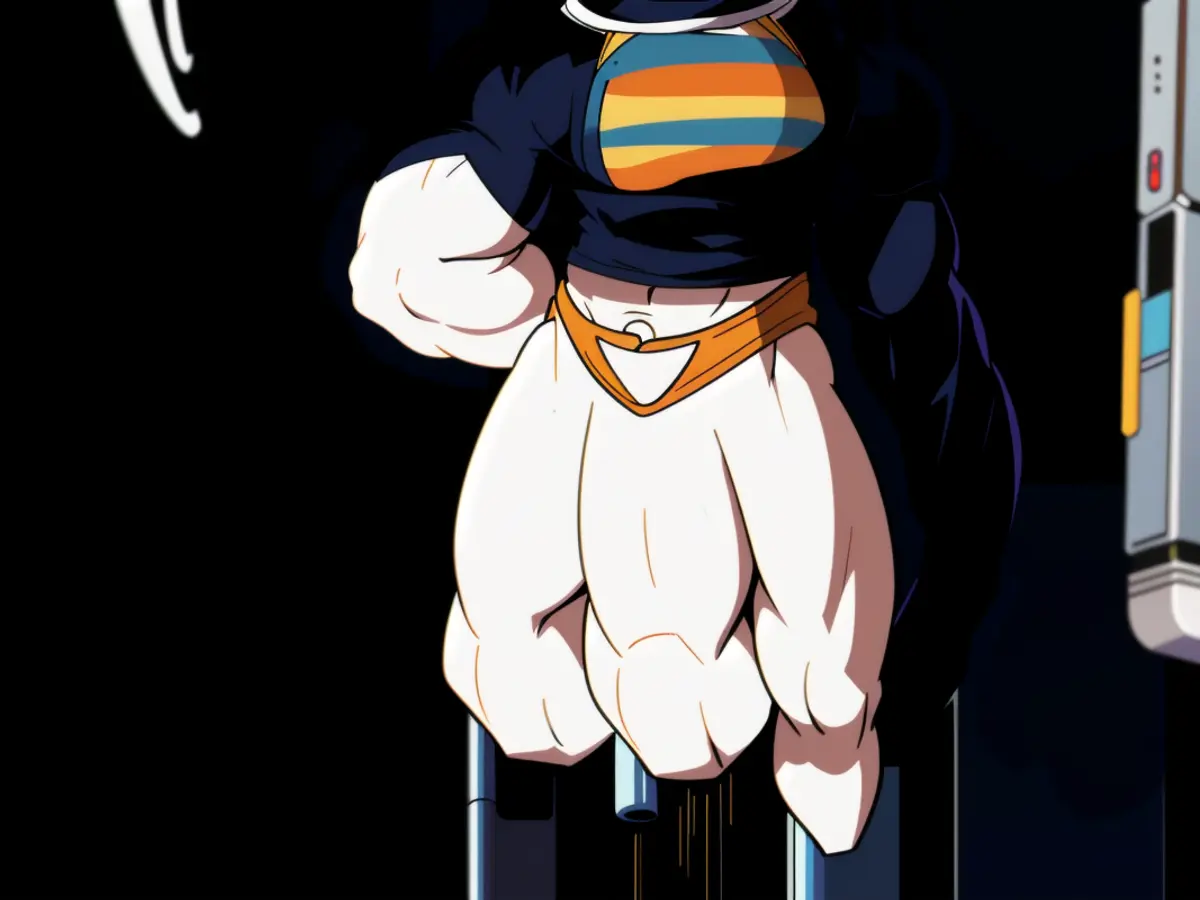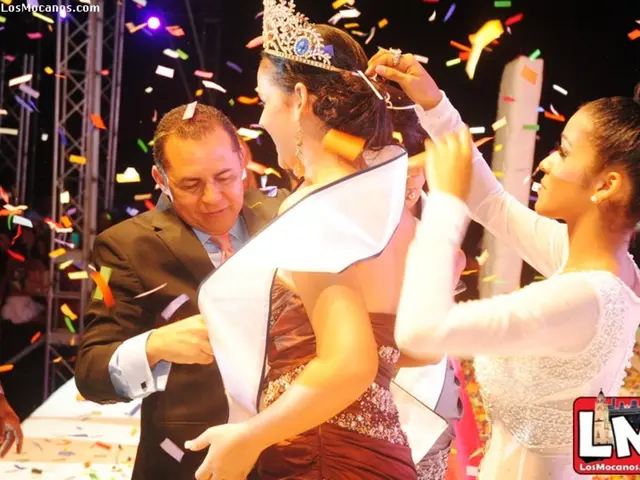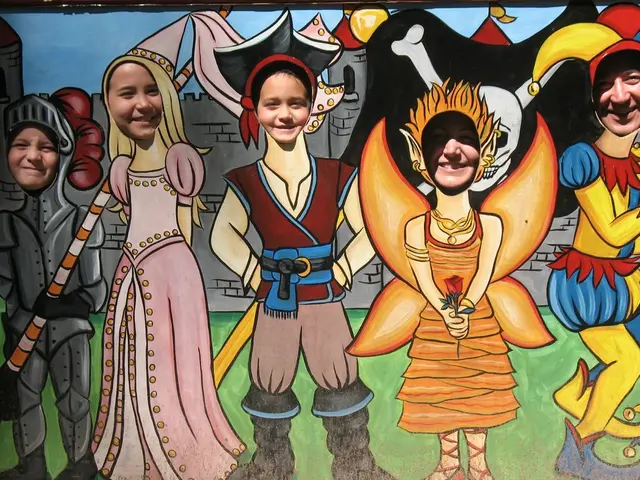Astronauts Sunita Williams and Barry Wilmore Finally Appear in Their Long-Awaited Return Home from ISS
An extended journey, initiated by technical malfunctions
Astronauts of American origin temporarily grounded aboard the International Space Station, en route back to Earth
After a grueling period of roughly nine months, instead of the planned eight days, American astronauts Sunita Williams and Barry Wilmore are finally beginning their journey back to Earth. This departure signifies the end of their prolonged stay on the International Space Station (ISS).
Two US astronauts, Sunita Williams and Barry Wilmore, faced an unexpected predicament due to a technical glitch that forced them to extend their stay. This unexpected adventure commenced with their departure aboard a SpaceX Crew Dragon capsule, as evidenced by the live broadcast from NASA.
They are accompanied by their fellow astronauts Nick Hague and Alexander Gorbunov, who arrived at the ISS in September. The estimated journey duration is 17 hours, with the Crew 9 capsule on track to land in the Atlantic Ocean off the coast of Florida at 10:57 PM, German time. The weather conditions for the landing have been reported as ideal by NASA.
Camaraderie and Anticipation within the Astronaut Crew
Prior to the launch, live broadcasts revealed the astronauts donning spacesuits, boots, and helmets, joking, hugging, and capturing souvenir photos with their ISS partners.
The extended stay of Williams and Wilmore was initially set for about a week, but due to issues with their Boeing Starliner spacecraft, NASA opted for them to remain on the ISS and for the Starliner to return to Earth uncrewed to ensure safety[1][2].
A team of experienced space explorers
In September, only Hague and Gorbunov had flown to the ISS in a SpaceX Crew Dragon capsule, leaving the remaining two seats open for Williams and Wilmore[1][2]. Both Williams, 59, and Wilmore, 62, are seasoned astronauts boasting multiple spaced voyages.[1][2]
Although the extended stint on the ISS for Wilmore and Williams does not surpass the record set by their fellow American Frank Rubio, who spent 371 days on the space station in lieu of the intended six months due to a cooling system malfunction in the Russian spacecraft designed to bring him back to Earth, it is nonetheless a remarkable feat.
Friendly Greetings for "Crew 10"
Over the weekend, the four-member "Crew 10" arrived at the ISS to relieve the "Crew 9" on board. The crew includes US astronauts Anne McClain and Nichole Ayers, Japanese astronaut Takuya Onishi, and Russian cosmonaut Kirill Peskov. They are expected to remain in space until autumn. Upon arrival, they were showered with warm embraces.
Additionally, US astronaut Don Pettit and Russian cosmonauts Alexei Ovchinin and Ivan Wagner, who joined the ISS in September, will stay there as scheduled.
Footnotes
[1] Space.com (2021). Boeing Starliner's Debut Flight to ISS Marks First Private Astronauts Journey to Space Station. Retrieved from https://www.space.com/boeing-cst-100-starliner-first-launch-private-crew-mission-space-launch-system.html
[2] NASA (2021). NASA Station Status: Crew-9 Spaceship Launches to Space Station. Retrieved from https://www.nasa.gov/mission_pages/station/status/index.html
Topics
- Space
- ISS
- Space Travel
- Astronauts
- USA
Insights
- Causes of the Extended Stay: Sunita Williams and Barry Wilmore were initially scheduled for an eight-day mission aboard the Boeing Starliner, which faced multiple technical issues, including thruster problems and a propulsion system helium leak, preventing their return as planned[1]. As a result, NASA decided to keep the astronauts on the station and remotely bring the Starliner back to Earth without its crew[2].
- Impact of the Extended Stay: The prolonged exposure to zero gravity led to significant physical challenges for both astronauts[1][2]. Despite these difficulties, they contributed to ongoing research on the ISS through various scientific experiments and spacewalks[2]. Furthermore, the unexpected extension had a psychological impact on both the astronauts and their families, who had to endure a much longer separation than originally anticipated[2].
- Comparison with Other Prolonged Space Missions: Sunita Williams and Barry Wilmore's mission ranked sixth in duration among NASA's longest single missions, although it is not as unprecedented. For example, Scott Kelly spent 340 days in space during his "Year in Space" mission from 2015 to 2016[2]. However, Sunita Williams will become the second most experienced U.S. astronaut with a total of 608 days in space, surpassed only by Peggy Whitson, who has spent 675 days in space[2]. Like other astronauts who extended their stays in space, Williams and Wilmore will face a demanding recovery process, including re-adapting to Earth's gravity and regaining muscle and bone mass lost during their time in microgravity[2].
- Despite the malfunction of the Boeing Starliner spacecraft, which forced an extended stay of 9 months for astronauts Sunita Williams and Barry Wilmore on the International Space Station (ISS), they managed to contribute to ongoing research through various scientific experiments and spacewalks.
- The four-member "Crew 10," including US astronauts Anne McClain and Nichole Ayers, Japanese astronaut Takuya Onishi, and Russian cosmonaut Kirill Peskov, were greeted with warm embraces upon arriving at the ISS to relieve the "Crew 9," which included astronauts Sunita Williams and Barry Wilmore, who had an extended stay due to a malfunction.
- After their grueling 371-day journey on the ISS in lieu of the intended six months due to a cooling system malfunction in the Russian spacecraft designed to bring him back to Earth, American astronaut Frank Rubio's extended stint holds the record for the longest single mission among NASA astronauts, surpassing the current 9-month stay of Sunita Williams and Barry Wilmore.







